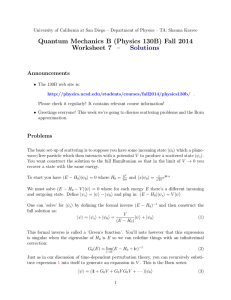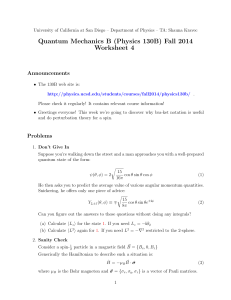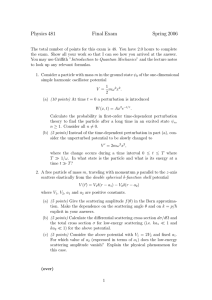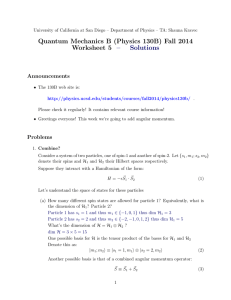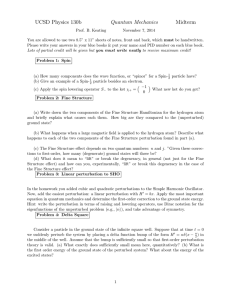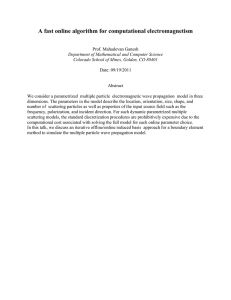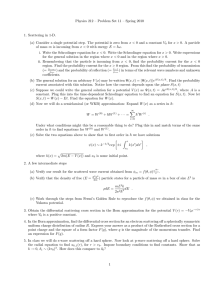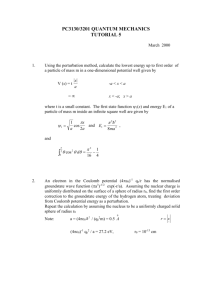Quantum Mechanics B (Physics 130B) Fall 2014 Worksheet 7 Announcements
advertisement
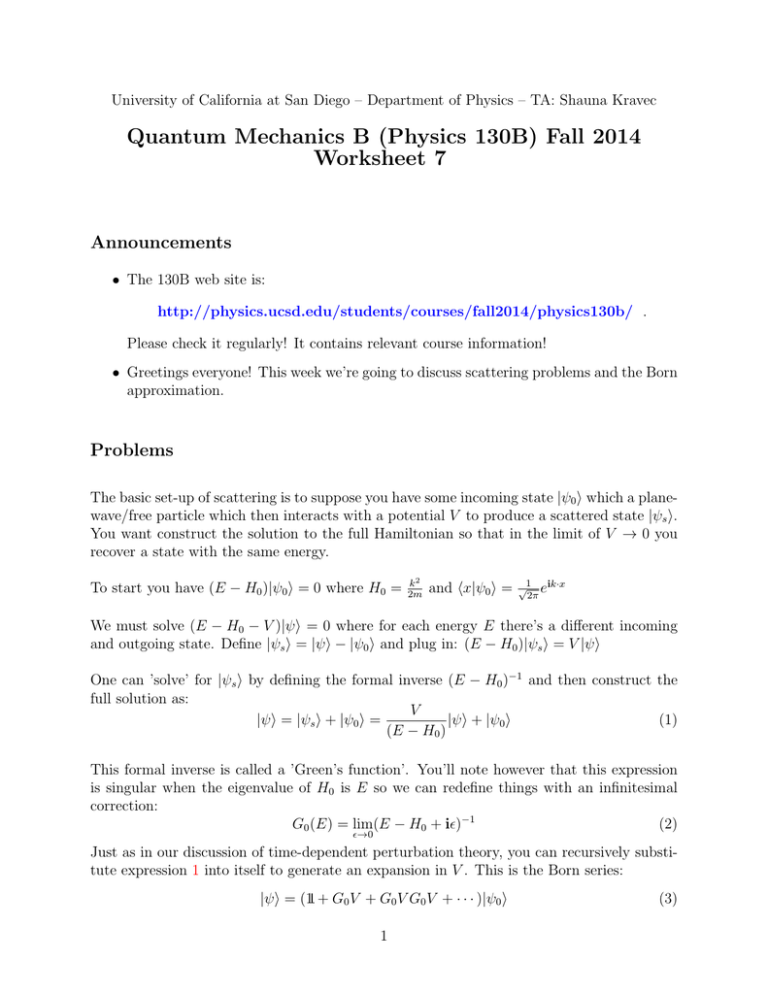
University of California at San Diego – Department of Physics – TA: Shauna Kravec Quantum Mechanics B (Physics 130B) Fall 2014 Worksheet 7 Announcements • The 130B web site is: http://physics.ucsd.edu/students/courses/fall2014/physics130b/ . Please check it regularly! It contains relevant course information! • Greetings everyone! This week we’re going to discuss scattering problems and the Born approximation. Problems The basic set-up of scattering is to suppose you have some incoming state |ψ0 i which a planewave/free particle which then interacts with a potential V to produce a scattered state |ψs i. You want construct the solution to the full Hamiltonian so that in the limit of V → 0 you recover a state with the same energy. To start you have (E − H0 )|ψ0 i = 0 where H0 = k2 2m and hx|ψ0 i = √1 eik·x 2π We must solve (E − H0 − V )|ψi = 0 where for each energy E there’s a different incoming and outgoing state. Define |ψs i = |ψi − |ψ0 i and plug in: (E − H0 )|ψs i = V |ψi One can ’solve’ for |ψs i by defining the formal inverse (E − H0 )−1 and then construct the full solution as: V |ψi + |ψ0 i (1) |ψi = |ψs i + |ψ0 i = (E − H0 ) This formal inverse is called a ’Green’s function’. You’ll note however that this expression is singular when the eigenvalue of H0 is E so we can redefine things with an infinitesimal correction: G0 (E) = lim(E − H0 + i)−1 (2) →0 Just as in our discussion of time-dependent perturbation theory, you can recursively substitute expression 1 into itself to generate an expansion in V . This is the Born series: |ψi = (1 + G0 V + G0 V G0 V + · · · )|ψ0 i 1 (3) OK! So now you should ask, how can I actually calculate G0 ? Answer: Multiply by 1 G0 = G0 1 = X 0 0 G0 |E ihE | = E0 X E0 |E 0 ihE 0 | E − E 0 + i (4) The sum is schematic and we’re sliding over difficulties like the continuum, degeneracy, and boundstates but it is correct. We’ve reduced the problem to some sum/integral. 1. Simplest Case Consider a one dimensional particle incident on a potential V (x) = V0 δ(x − x0 ) 2 k using 4 (a) Construct G0 (x, x0 ) ≡ hx|G0 |x0 i for a free particle of E = 2m For this choice of potential we needn’t resort to perturbation theory. (b) Using 1 write a form of ψ(x) = hx|ψi in terms of G0 (x, x0 ) Hint: Write ψ(x0 ) in terms of G0 (x0 , x0 ) (c) Using the form of G0 you derived in part (a) express ψ(x) directly in terms of k (d) Solve for the transmission probability |ψ(x → ∞)|2 2
